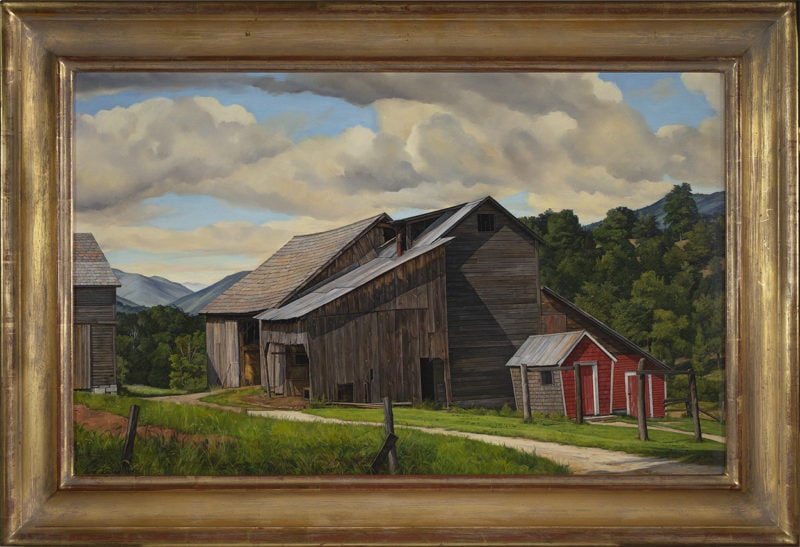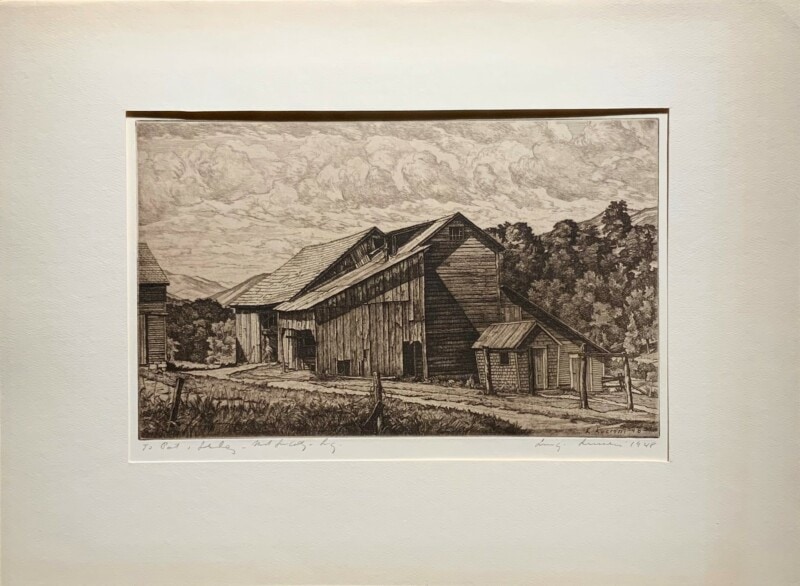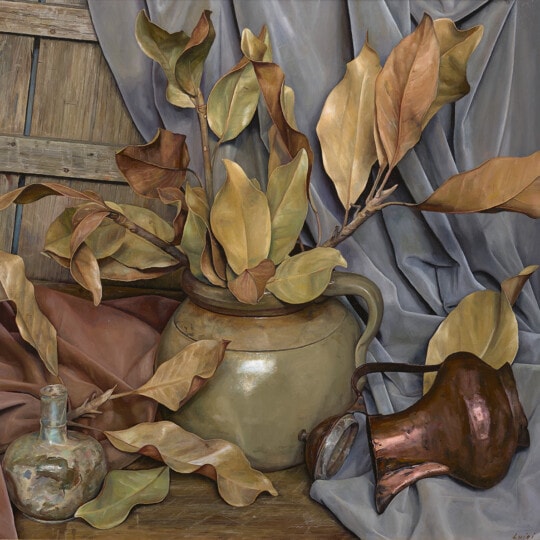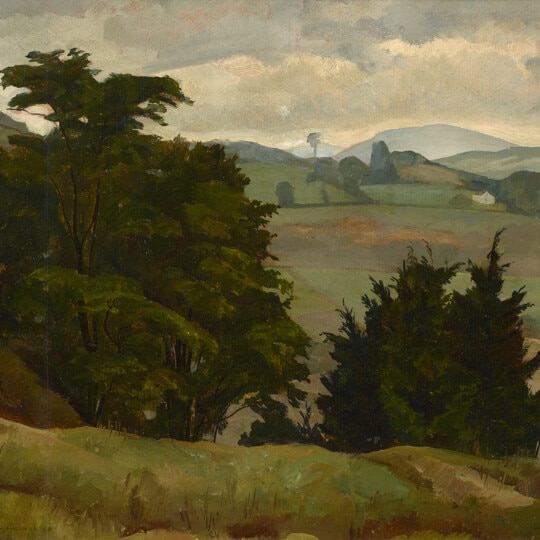The Weathered Barn, 1947
by Luigi Lucioni (1900–1988)19⅛ x 31 1/16 inches
Signed and dated lower left: L Lucioni 1947
Includes an etching of this painting
Weathered Barns, 1948
Etching on paper
11⅜ x 15 inches
Signed and dated lower right: L. Lucioni 48
Information
Provenance
Associated American Artists, New York, New York
Private collection, Hollywood, California
Brady Gallery, South Burlington, Vermont, 1994
Hirschl & Adler Galleries, New York, New York
Private collection, Minnesota, until 2001
Richard York Gallery, New York, New York
Mark Goldman, Sunapee, New Hampshire, acquired from above, 2001
Sale, William Smith Auctions, Plainfield, New Hampshire, September 12, 2020, lot 13, from above
Exhibited
Gerald Peters Gallery, New York, New York, Luigi Lucioni (1900–1988): Still Lifes, Landscapes and Figures, April 15–May 15, 1999
Literature
Stuart P. Embury, The Art and Life of Luigi Lucioni: A Contribution Towards a Catalogue Raisonné (Stuart P. Embury, 2006), 170, 188, no. 47.26.
Note: This work depicts the Greenberg family dairy farm on Barnumville Road in Manchester Center, Vermont, along the Battenkill River.
Artist Biography
Luigi Lucioni emigrated from his native Italy to the United States in 1911. Already interested in art from the age of six, Lucioni continued his studies at New York schools including the Cooper Union and National Academy of Art and was later granted a scholarship from the Tiffany Foundation. He traveled to Italy in 1925 where he discovered what he referred to as “classic realism” in the works of Italian masters Piero della Francesca, Andrea Mantegna and Leonardo da Vinci. Lucioni returned to America, where he received his first solo exhibition in 1927. His works were marked by a heightened






